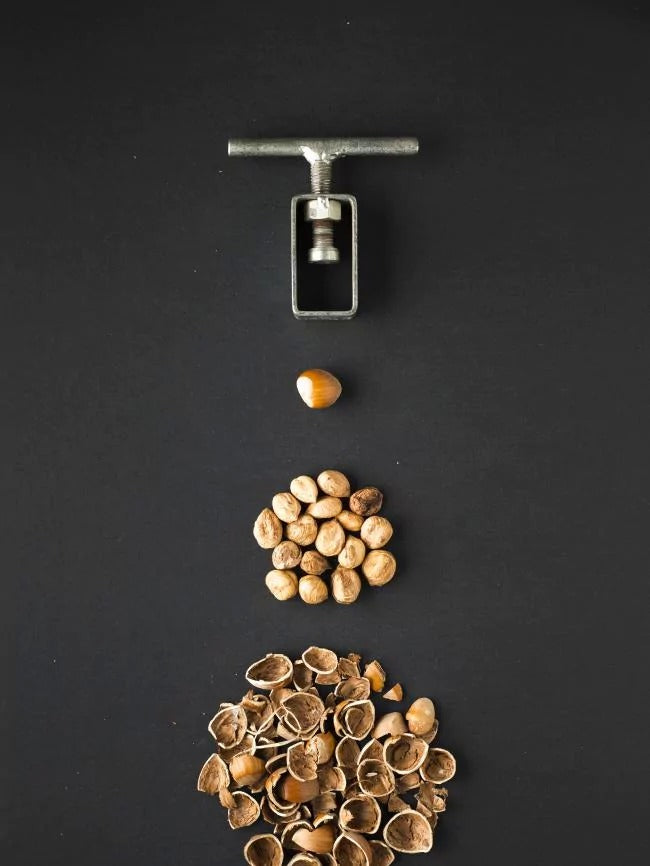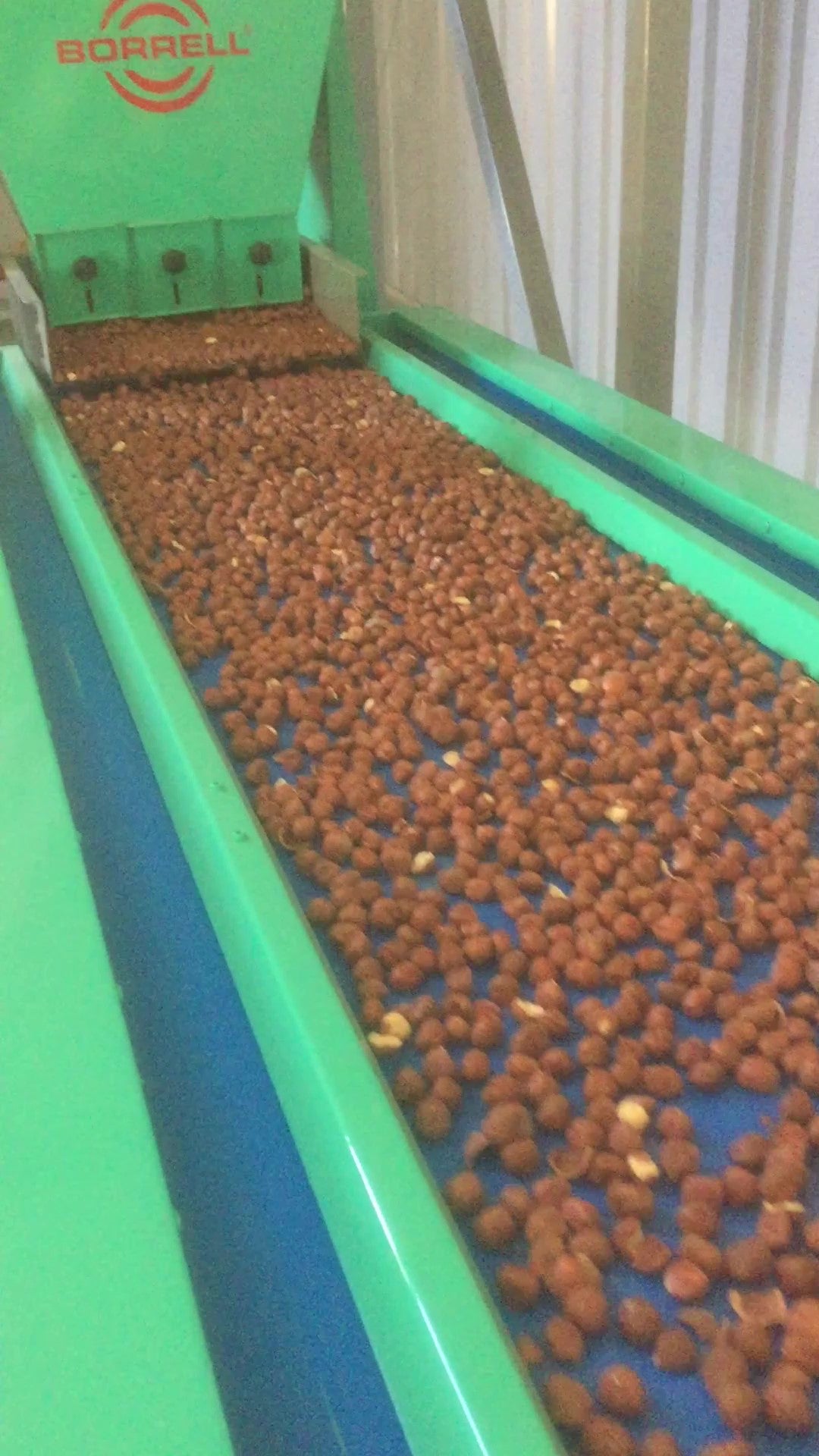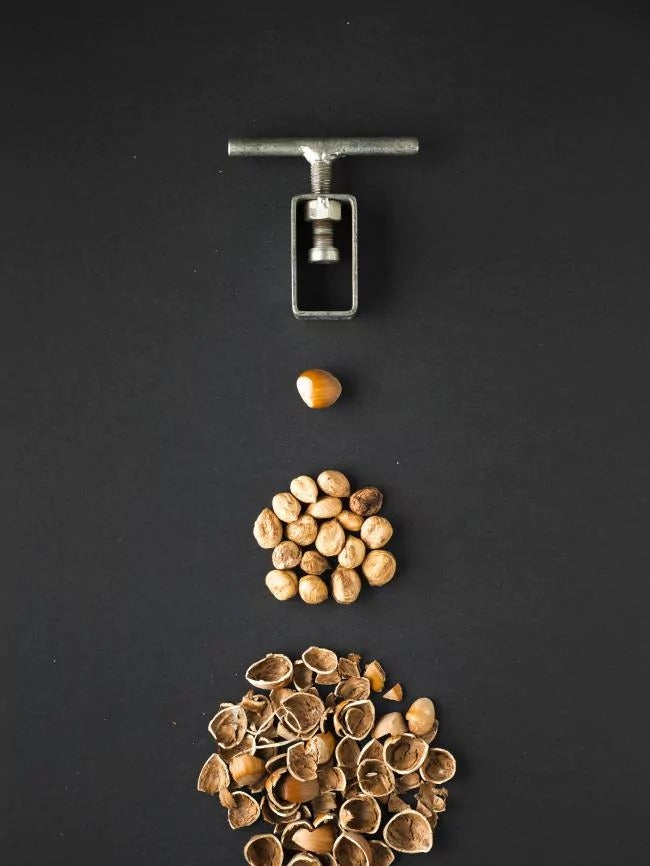HAZELNUTS have cracking potential.
The Australian Nut Industry Council predicts growth in the Australian hazelnut industry will be enormous over the next three years, with the current 170-tonne annual national harvest set to rise to 2550 tonnes by 2021 as many young orchards come into production.
Grower Ben Barrow plans to be a major part of this industry explosion.
He is selling his, and other Victorian growers’ hazelnuts, under his Carboor Harvest brand, in a bid to fill a gap in the market for premium homegrown supply.

“About 70 per cent of the world’s hazelnuts come from Turkey and 98 per cent is northern hemisphere,” Ben says. “So we see some counter-seasonal opportunities and a lot of concentration risk for the industry.”
Ben says country-of-origin labelling regulations also play in favour of his young business by making it tough for companies to call products “Australian made” unless ingredients are grown here.
Read more from FARM’s Branching Out Series
She’ll be heritage apples: How to plan and care for an orchard
Clean cut: How to prune fruit trees
“A lot of manufacturers are looking for Australian supply,” he says. “Obviously there is a pricing point issue. They are familiar with Italian and Turkish product, which is a lot cheaper than what we can provide at the moment. But I see a lot of opportunity.”
Ben and his wife, Maxine, have a young orchard of 9000 trees at Carboor, southeast of Wangaratta. The trees will come into commercial production in the next four years. Meanwhile, Ben is working to cement his brand’s position as a supplier to the food service industry and a direct-to-consumer gourmet label.
BIRTH OF A BRAND
Ben grew up on a fifth-generation livestock property. As a child, waking up early was his least favourite thing about farm life, so he studied engineering and pursued a career in mining, “little knowing they had 4am starts”.
“In mining, we went through the boom and the crash, so coming out the other side of the crash I thought there’s got to be something better to do,” Ben says.
He felt a pull back to agriculture, so he and Maxine settled on trees because they saw huge potential in nuts — and trees don’t need milking or herding before dawn.
“The truth is we decided on hazelnuts and bought the trees, then we said to each other, ‘We had better find some land’,” Ben says.
LOCATION, LOCATION
Victoria’s alpine region has the perfect climate for the crop: high rainfall of about 1000mm a year and cold temperatures. Hazelnuts need at least 1200 hours between 5C and 7C for trees to produce nuts.
Ben and Maxine bought a 40-hectare property at Carboor in 2015 and started planting trees that August.
The couple launched Carboor Harvest the following year with two other business partners: Ben’s mum, Helen, and an investor, Antony Parker.
The 9000-tree orchard covers 16 hectares of the Carboor property, with 12 varieties. Ennis, butler, barcelona and lewis are the main varieties, plus minor varieties as pollinators.
“When the hazelnut trees flower, they flower for six weeks,” Ben says. “But pollen shed from catkins (male flowers) is about two weeks, so you need early, mid and late pollinators for each main variety.”
Research from the NSW Department of Primary Industries explains hazelnuts should be considered sterile as a single variety because trees have male and female flowers, but peak periods of male and female flowering may not coincide for any one variety.
Before planting, Ben deep-ripped to break up the clay pan beneath the surface and rotary hoed to loosen the soil and kill the grass. He built a 10-megalitre dam and installed several kilometres of drip line for irrigation, although he says he hasn’t needed to irrigate yet.
Hazelnuts reach full commercial production at about seven years old and peak at 10 years. This year the trees dropped just a few bucketfuls of nuts from March through April.
“With four-year-old trees, we’re aiming for 500g of nuts per tree,” Ben says. “That gives us 4.5 tonnes, which makes us the second biggest producer in the state by volume by our second harvest.”
His business plan is based on the grove supplying 90 tonnes of nuts a year.
He applies about 400g of organic fertiliser by hand to each shrub-like tree once a year and plans to net trees to discourage white cockatoos. Locusts have been the biggest pest so far, not counting suckers that insistently shoot up around the base of each trunk.
“Trying to train the trees to be trees is one of the biggest issues,” Ben says.
STRENGTH IN NUMBERS
Ben’s business plan for Carboor Harvest is much bigger than his orchard alone.
While his trees establish, he is growing the brand by buying and processing nuts from other Victorian growers.
Darren and Cheryl Dew own a 2500-tree orchard at Hoddles Creek in the Yarra Valley, and have started selling their harvest to Ben. The Dews bought the property in 2016, complete with four hectares of mature hazelnut trees, planted in the late 1980s. Varieties include ennis, butler, monbulk pride, wanlis pride, cosford, casina, halls giant, barcelona and daviana.
As a new grower, Darren called a nursery at Gembrook for advice and they put him in touch with Ben. “Selling to Ben suits me just fine,” Darren says, “because I’m not one to go to markets every weekend.”
Darren harvests nuts using a sweeper, which blows fallen nuts away from trees and rakes them into piles between rows. He then sucks everything up with an ATV-pulled vacuum and Cheryl helps him sort nuts from leaf litter by hand. Ben buys the nuts in-shell.

“Realistically, from our connections now, we are looking at 150-180 tonnes a year in the future and at this scale it starts to appear on the radar of institutional investors,” he says.
About a third of the nuts Ben buys are destined for wholesale customers, while the rest are made into Carboor Harvest products, which include hazelnut oil, butter and dukkah.
Maxine co-ordinates the manufacturing in Melbourne, but is looking to outsource the value-adding to local producers who have an oil processing and packaging plant.
Carboor Harvest products are sold through distributors in Victoria and NSW, as well as directly to independent retailers, online and at farmers’ markets. Ben says they will continue to focus on direct sales as well as wholesale food service to see how the market develops.
CHALLENGE OR OPPORTUNITY
For Ben, the hardest step in taking hazelnuts to market has been separating kernels from shells.
He bought a second-hand cracker, designed to shell 50kg of nuts an hour, but the machine falls short of this target by a long shot.
“It is suitable for a single farm,” Ben says, “but now that we are potentially a four-farm scale, it is not practical. A lot of shell goes out in the kernel stream, and poor Maxine has to sort through that.”
So, the next stage of company growth is to streamline cracking and packing. However, Ben is also focusing on expanding relationships with manufacturing and hospitality customers.
“There is provenance as a selling point,” he says. “But there is also benefit in all the different varieties we are growing. We have ennis that grow giant tasty nuts great for eating in praline, but we also have barcelona that blanch well and are better for confectionery.
“For food service needs, when a restaurant is crushing hazelnuts up to put on top of a pancake, for instance, Turkish stuff just doesn’t have the same crunch and flavour intensity.
“Everywhere I look there are hazelnut groves that are being enjoyed by white cockatoos and not harvested because it is all too hard.
“With efficient primary processing, we could actually start to mop up and pay a lot of these people a decent price and we would be able to get a lot of the disused hazelnut orchards active again.”
FARM FACTS
Carboor Harvest
Ben Barrow runs a young hazelnut orchard at Carboor in Victoria’s North East. He sells his own and other growers’ nuts under his Carboor Harvest brand, launched in 2016.
Ben has 9000 trees and the orchard is due to come into full production in 2022. He estimates trees will produce a peak of 10kg of nuts each by 10 years old.
Rows are planted 5.5m apart with trees at 3m intervals. When the orchard is about seven years old, Ben will remove every second tree and transplant to a new paddock.
The Carboor Harvest range includes extra virgin hazelnut oil 250ml, $25, hazelnut butter 250g, $13, dukkah 100g, $10, and nuts, $30 a kilogram.
carboorharvest.com.au
Full article at https://www.weeklytimesnow.com.au/agribusiness/farm-magazine/carboor-harvest-working-on-cracking-into-the-next-level-of-business/news-story/14599d69e6f68ceba0fb90db4792bae3








